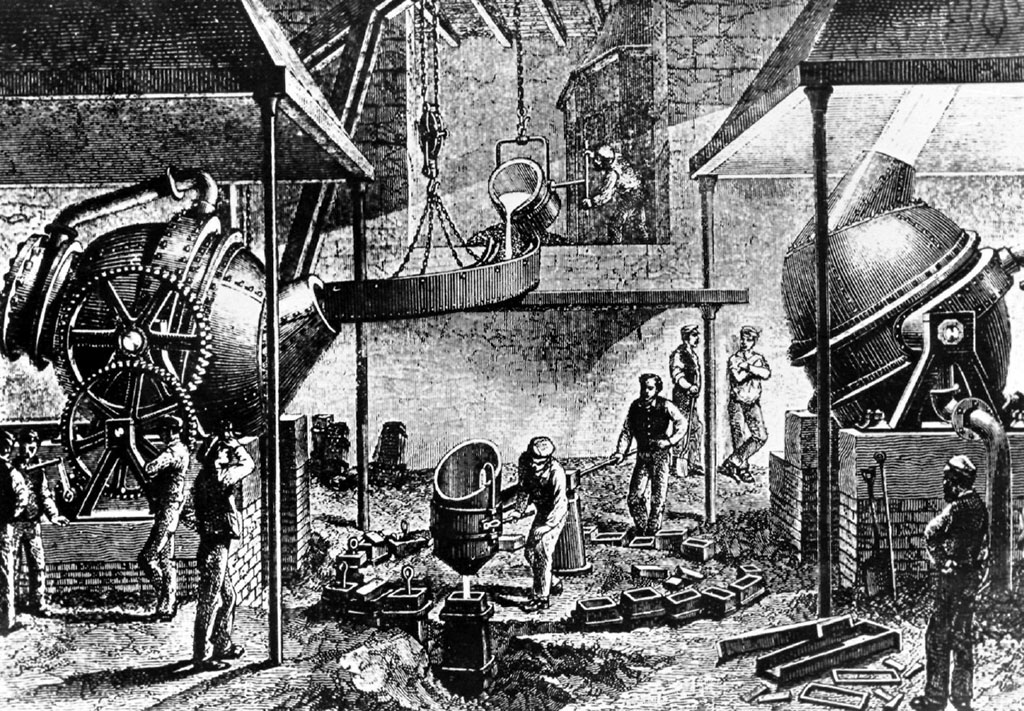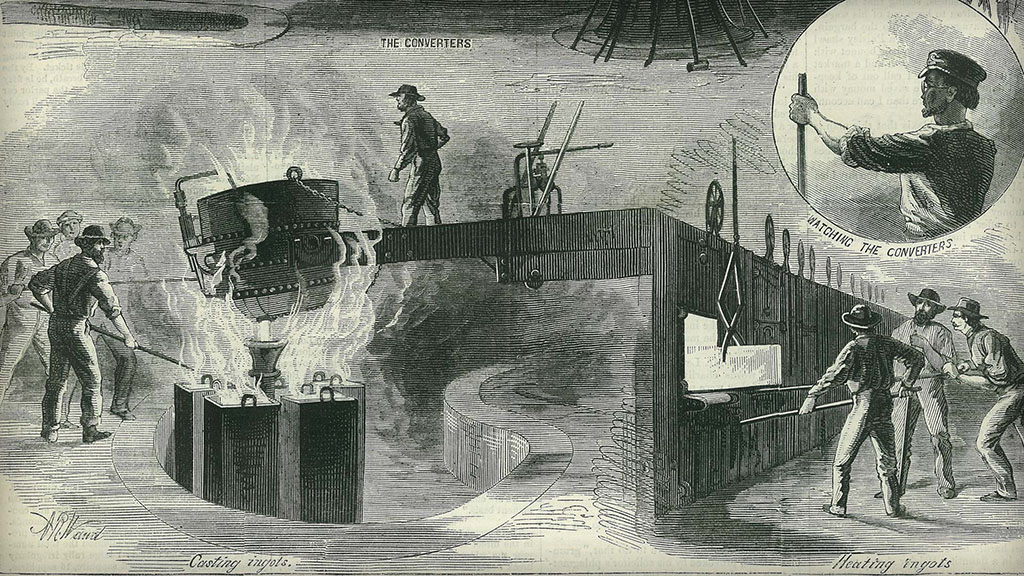Views: 0 Author: Rachel Wynn Publish Time: 2025-04-25 Origin: Site











Steel was first made around 1200 BCE during the Iron Age, although the material was not as advanced as modern steel. Early civilizations, particularly in Asia Minor, began experimenting with iron extraction, and through a rudimentary process of adding carbon to iron, they created an early form of steel. The true development of steel began around 500 BCE in India and China, where processes like the bloomery method and later the blast furnace enabled the production of higher-quality steel. However, it wasn’t until the Industrial Revolution in the 19th century, with innovations like the Bessemer process, that steelmaking became more efficient and mass-produced, leading to the global industry we know today.
The story of steel begins with iron, and it is believed that steel’s earliest forms were created around 1200 BCE during the Iron Age. Early civilizations, particularly in Asia Minor (modern-day Turkey), began extracting iron from ore through primitive furnaces. This produced wrought iron, which, though not exactly steel by today’s standards, was a precursor to it.
Ancient craftsmen discovered that by adding carbon to iron, they could create a stronger and more durable material. While these early methods of producing steel were rudimentary and often resulted in impurities, they laid the foundation for future steelmaking advancements.
The real breakthrough in steel production occurred between 500 BCE and 1000 CE, particularly in India and China. During this period, the bloomery process was developed in India, allowing artisans to produce steel with a higher carbon content than before. One of the most notable early steel varieties was Wootz steel, produced in India around the 3rd century BCE. Wootz steel was renowned for its superior quality and became highly sought after in the ancient world, including the Roman Empire, where it was used to craft weapons and tools.
Meanwhile, in China, the production of cast iron began around 500 BCE. Although cast iron is not as versatile as steel, it marked an important step forward in metalworking and was used for various applications, including construction and weaponry.
Around 1000 CE, the blast furnace technology emerged in China, allowing for more efficient iron production and laying the groundwork for higher-quality steel. The Chinese were at the forefront of early steelmaking, although the process remained limited and localized for centuries.

The true revolution in steel production came during the Industrial Revolution, with key advancements that forever transformed the steel industry. One of the most significant innovations was the development of coke-fired furnaces in England in the 17th century, which replaced traditional charcoal with coke as the fuel source, increasing the efficiency of iron production.
However, it was the Bessemer process, introduced by Sir Henry Bessemer in 1856, that fundamentally changed the steelmaking industry. This process allowed for the conversion of pig iron (iron with high carbon content) into mild steel through a process of oxygen blowing that removed excess carbon. The Bessemer process made steel production much more efficient, reducing costs and enabling mass production. This was a turning point that allowed steel to become widely accessible and affordable.
Following the Bessemer process, further innovations like the open-hearth furnace and the basic oxygen furnace continued to improve steel production, making it cleaner, faster, and more reliable.
The 20th century witnessed the rise of the global steel industry, driven by innovations in steelmaking technology and an explosion in demand across multiple sectors. The widespread use of steel in the automobile industry, beginning with the mass production of the Ford Model T in the early 1900s, marked a major turning point. Steel was no longer just for tools and weapons; it became integral to modern infrastructure, vehicles, and machinery.
The World Wars of the early 20th century also played a critical role in accelerating steel production, as the demand for weapons, vehicles, and military infrastructure soared. Countries like the United States, Germany, and Japan became leaders in steel production.
By mid-century, advancements such as the development of stainless steel, cold-rolled steel, and high-strength alloys further expanded steel’s applications in industries ranging from construction to aerospace.
In the 21st century, steel remains one of the most important materials in the world, but the industry has evolved to focus on sustainability. Electric arc furnaces (EAF), which use recycled steel scrap as the primary raw material, have become more prevalent. These methods reduce energy consumption and the environmental impact of steelmaking, contributing to a greener, more sustainable industry.
Steel is now used in a wide array of industries, from construction and automotive manufacturing to energy production and consumer goods. Innovations continue, with new alloys designed for greater strength, durability, and resistance to corrosion, ensuring that steel remains a key material for the future.

Steel has come a long way since its first creation over 2,000 years ago. From the ancient methods of iron extraction to the Bessemer process and modern electric arc furnaces, steel production has continuously evolved to meet the needs of a growing world. Today, steel is a versatile and indispensable material, central to industries worldwide.
As we look to the future, the steel industry will continue to innovate, focusing on more efficient, sustainable methods of production while maintaining steel’s crucial role in construction, manufacturing, and technology.
Steel in its earliest form was created around 1200 BCE during the Iron Age, with significant advancements occurring in India and China around 500 BCE.
While steelmaking evolved over centuries, Sir Henry Bessemer is credited with revolutionizing the process in 1856 with the Bessemer process, which made steel production more efficient and cost-effective.
The oldest known form of steel is Wootz steel, produced in ancient India around 3rd century BCE, known for its high quality and used in weapons and tools.
Steelmaking evolved from ancient bloomery methods to modern processes like the Bessemer process, electric arc furnaces, and basic oxygen steelmaking, dramatically improving efficiency and product quality.
Steel is essential in industries like construction, automotive manufacturing, and aerospace, offering strength, durability, and versatility. Innovations continue to make steel more sustainable and cost-effective for the future.






